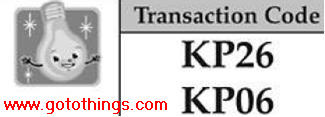What is the importance of activity types?
Activity types classify the activities produced in the cost centers within a controlling area.
To plan and allocate the activities, the system records quantities that are measured in activity units. Activity quantities are valuated using a price (allocation price).
In Overhead Cost Controlling, costs based on the activity quantity of an activity type are posted separately in fixed and variable portions. When you divide the activities of a cost center into activity types, you should consider whether the costs can be allocated effectively to the activity types.
The prices of the activity types of a cost center can be either entered manually, or calculated by the system based on the costs allocated to the activities. Prices can be calculated either using plan costs or actual costs.
You can plan, allocate, and control costs either at the activity type level of a cost center, or at the cost center level. You can enter actual costs at the cost center level. Costs entered at the cost center level are assigned using splitting.
You can also assign the activity type of a cost center directly. This use was designed for certain application areas (such as personnel costs and depreciation postings).
When the activities produced by a cost center are used by other cost centers, orders, processes, and so on, this means that the resources of the sending cost center are being used by the other objects.
Typical examples of activity types for cost centers are machine hours, administrator hours, CPU minutes or units produced.
---
What is an ‘Activity Type’?
‘Activity Type’ helps you do define the service/action (for example, human labor, machine labor, repair hours, etc.) performed or provided by a cost center. It forms the ‘basis’ for allocating costs to other cost centers or internal orders, etc. You may assign an activity type to an operation so that they are reflected in PP; a CO document is created with the costs of the operation allocated from the cost center that produced the operation to a production order, when the operation is completed in PP.
You may group activity types into activity type groups for easy maintenance.
You need to arrive at the activity price, which needs to be attached to that particular activity type for planning or recording the actual. The activity price is calculated by dividing the total costs by the total planned/actual activity quantity (hours, units, etc.).
It is not necessary that all the cost centers have activity types associated with them. If there is no output from a cost center, then there will be no activity type for that cost center.
---
Where do You Assign Activity Type in Cost Centers?
There is no direct assignment. You plan the output for a cost center first by using Transaction KP26. Then, plan the value of that cost center with the budget for a period in Transaction KP06.

‘Planned Activity expenditure’/‘Planned Activity Quantity’ gives the ‘planned activity rate,’ which you can use to valuate your activity confirmations in manufacturing orders. You can also define your activity prices on your own, but you have to run the ‘price revaluation’ if you want to revaluate your actual activity prices.